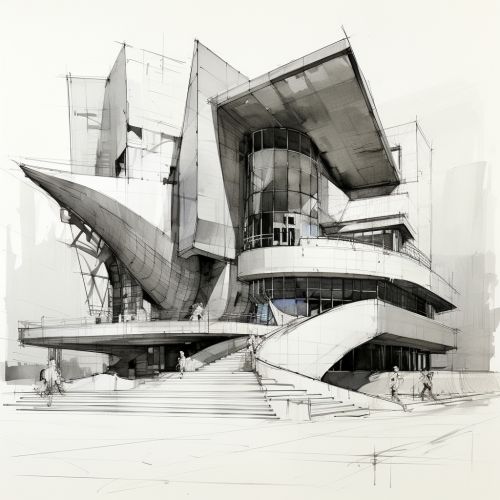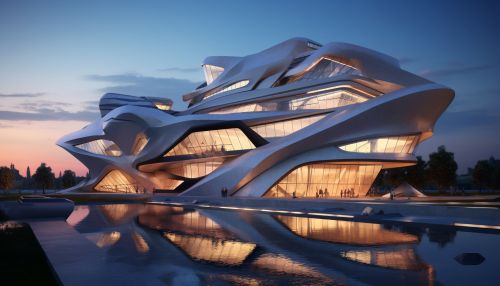Deconstructivism
Overview
Deconstructivism is a development in postmodern architecture that began in the late 20th century. It is characterized by ideas of fragmentation, an interest in manipulating ideas of a structure's surface or skin, non-rectilinear shapes which serve to distort and dislocate some of the elements of architecture, such as structure and envelope. The finished visual appearance of buildings that are constructed in this style is characterized by a stimulating unpredictability and a controlled chaos.
Origins and Influences
Deconstructivism came to public notice with the 1982 Parc de la Villette architectural design competition, in which the winning entry proposed a radical departure from the modernist architectural norms. The name "Deconstructivism" was first used in 1988, in an exhibition curated by Philip Johnson and Mark Wigley at the Museum of Modern Art in New York. The exhibition showcased works by architects such as Frank Gehry, Rem Koolhaas, and Zaha Hadid, who were considered pioneers of the movement.
The roots of Deconstructivism can be traced back to the ideas of Russian Constructivist architects such as Vladimir Tatlin and El Lissitzky. Their work, along with the philosophies of French philosopher Jacques Derrida, played a crucial role in shaping the movement. Derrida's theories of deconstruction, which involve the questioning of existing assumptions and conventions, were particularly influential.
Characteristics
Deconstructivist architecture is marked by a lack of harmony, continuity, or symmetry. Its aesthetic is characterized by a sense of fragmentation and the manipulation of a structure’s surface. Buildings of this style are often perceived as being chaotic and disjointed, with a complex interplay of architectural elements that seem to be in conflict with each other.
Deconstructivist architecture also distorts and dislocates conventional architectural elements such as structure and envelope. It rejects the traditional idea of an orderly, rational sequence of spaces, instead favoring a more dynamic and unpredictable design.


Notable Works
One of the most famous examples of Deconstructivist architecture is the Guggenheim Museum in Bilbao, Spain, designed by Frank Gehry. The building's complex, curvilinear form and the unpredictability of its metallic surfaces are characteristic of the Deconstructivist style.
Another notable example is the Jewish Museum in Berlin, designed by Daniel Libeskind. The building's zigzag shape and the dislocation of its interior spaces reflect the fragmented experience of the Jewish people in Germany.
Criticism and Controversy
Deconstructivism has been subject to criticism and controversy. Some critics argue that the style is overly focused on aesthetics at the expense of functionality. Others see it as a form of architectural spectacle that seeks to shock and awe rather than to serve practical needs.
Despite these criticisms, Deconstructivism has had a significant impact on contemporary architecture. It has challenged traditional notions of order and rationality in architectural design, and has opened up new possibilities for architectural expression.
